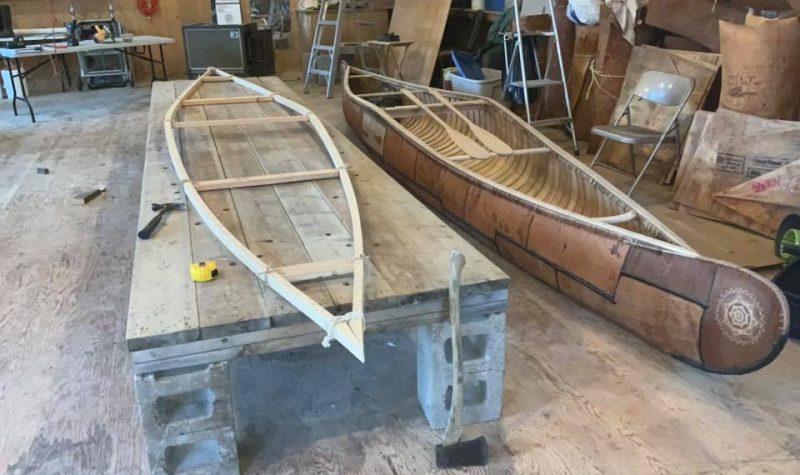A master canoe builder continues to carry on the traditions of his ancestors.
Todd Labrador has been building birch bark canoes at Kejimkujik National Park since 2014.
On Thursday, he will begin construction of a 21-foot ocean canoe.
Labrador makes the canoes in full view of the public where visitors can watch and ask questions.
The enthusiasm Labrador has for sharing his knowledge is obvious, but he admits, it does have one drawback.
“As far as the building process, it all depends on how much I talk. Because if I’m talking all day I don’t get much work done.”
He says a canoe generally takes about three months to complete.
A 14-foot canoe embossed with serpents Labrador built in 2014 will be on display while he works on his latest project.
Some of his previous builds found homes at the Canadian Museum of History and at the Maritime Museum of the Atlantic, he’s built another for the North American Indigenous Games and a university in Ontario is hoping to take possession of this year’s build once it is complete.
The process of building a canoe begins with collecting the materials.

Todd Labrador with birch bark for his build. Photo Credit: Todd Labrador
Labrador says it can take three months to find enough birch bark that is pliable and thick enough to use in the canoes.
Then he needs to find and dig up 1200 feet of spruce root to bind the canoe together.
Labrador says he begins gathering those supplies a year before the build.
“These days, it’s always a challenge to get the right quality birch bark that I need and I’m always looking far ahead.”
Fortunately for Labrador, he has built a strong following on social media and will often hear from people about places where he may find what he is looking for.
He says the online community is a modern version of the one his ancestors enjoyed.
“The forest was their home. But it was also their food store, it was also their hardware store, their lumber store, their materials store, their medicine store. So they were always looking when they were walking or hunting, they might see a tree that would be suitable when the season is right to harvest. So they would remember that.”
Labrador began building canoes as a hobby in 2002.
He draws on the knowledge his father passed on from watching the techniques his grandfather used to build canoes.
Labrador doesn’t use nails or screws in his construction as his ancestors wouldn’t have had them, but he isn’t an absolute purist.
He takes advantage of modern tools such as a bandsaw because it speeds up the process without impacting the final product.
“It’s quite different. I think my great-grandfather would be a little puzzled to see how I’m building canoes compared to how he built canoes.”
Labrador will be building his canoe at Kejimkujik between 10 a.m. and 4 p.m. each Thursday through Sunday this summer.
He encourages people to stop by to watch and ask questions.
Many generations of Labrador’s ancestors lived on the land now contained in the national park.
He’s proud to be able to continue their legacy in his ancestral home.
“Well I’m sure my father, my great-grandfather are pretty pleased to look down and see what we’re doing today. And very pleased that we’re sharing this in Kejimkujik national park.”
Reported by Ed Halverson
E-mail: edhalversonnews@gmail.com
Twitter: @edwardhalverson


